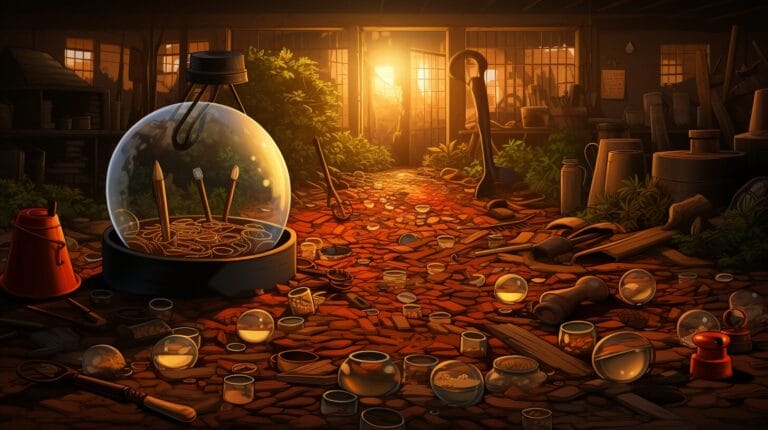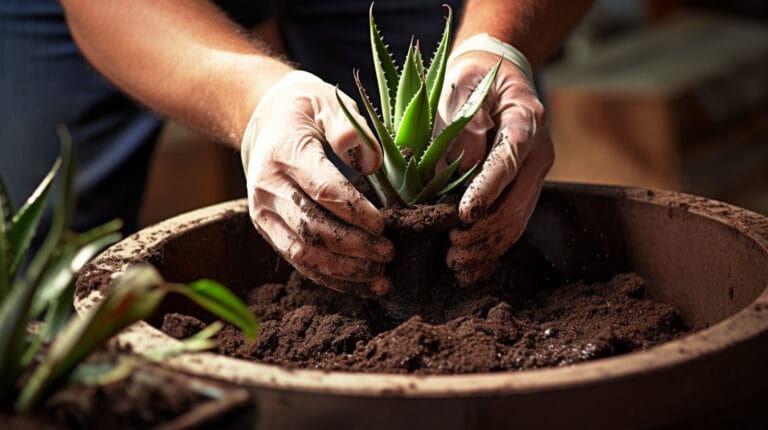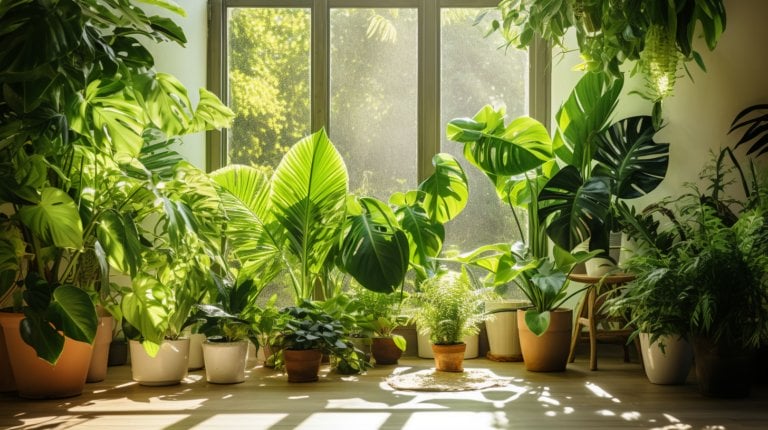Are Garden Phlox Deer Resistant? The Truth About Phlox Deer Resistance
Indeed, I’ve had my fair share of encounters with deer, just like many others. While they undoubtedly possess a certain charm, it isn’t quite as charming when they’re indulging in your stunning garden phlox! Therefore, can we perceive garden phlox as being resistant to deer?
Let’s delve into it together. We’ll explore different phlox varieties, tips to keep deer at bay, and alternatives should these pesky creatures have a penchant for your phlox.
Together, we’ll cultivate a garden that’s not just beautiful but also deer-resistant.
Key Takeaways
- Garden phlox has factors that contribute to its deer resistance, such as a strong fragrance, tough leaves, and the ability to recover quickly if nibbled on.
- Regional variations in deer eating habits can impact the vulnerability of garden phlox, with deer in colder regions, urban areas, heavily forested areas, and agricultural regions having different preferences for food sources.
- Ground cover phlox tends to have higher deer resistance compared to tall phlox, but neither type is completely deer-proof.
- Creeping phlox is a safer option for maintaining an untouched garden, but it is still important to consider deer resistance when choosing phlox varieties.
Understanding Deer-Resistance in Your Garden Phlox

Let’s get to know our garden phlox and the factors that make them unappealing to deer. We’ll also be considering how regional variations in deer eating habits can impact this resistance.
It’s an interesting mix of plant characteristics and animal behavior we’re about to explore.
Overview of the Garden Phlox plant
Before we delve into the issue of deer resistance, I’ll provide a brief overview of the garden phlox plant, as it’s crucial to understand its characteristics and growth conditions.
Garden Phlox, scientifically known as Phlox paniculata, is a perennial foliage known for its vibrant flowers and sweet and fragrant scent.
Here’s why it’s a favorite among garden enthusiasts:
- It blooms in a variety of colors, sparking joy and creativity in your garden.
- It attracts butterflies and hummingbirds, enhancing your garden’s ecosystem.
- It’s easy to grow, making it perfect for both novice and master gardeners.
- It’s potentially phlox deer resistant, providing peace of mind for those dealing with deer.
Understanding the phlox plants and their deer resistance will help us maximize our gardening experience.
Factors contributing to the deer resistance of garden phlox
I’m going to explore the factors that contribute to the deer’s resistance to garden phlox, providing insights into how and why these colorful plants often escape the munching mouths of deer.
One primary factor is the phlox’s scent. Garden phlox has a strong, sweet fragrance that deer often find unappealing. This scent serves as a natural deterrent, making phlox deer-repellent.
Another contributing factor is the texture of the phlox’s leaves. They’re tough and not particularly palatable to deer, further enhancing their deer resistance.
Lastly, garden phlox are generally robust and can recover quickly even if nibbled on, discouraging deer from seeing them as a regular ration.
Understanding these factors contributing to deer resistance can help in planning a deer-repellent garden.
Regional variations in deer eating habits and impacts on garden phlox
In this section, I’ll delve into how a significant number of regional variations in deer eating habits can impact the deer resistance of your garden phlox.
- Deer in colder regions: Deer in colder areas may be more likely to eat garden phlox during harsh winters when other food sources are scarce.
- Deer in urban areas: In suburban or urban areas, deer may have adapted to consuming a wider variety of plants, including your presumably deer-repellent garden phlox.
- Deer in forested regions: In heavily forested areas, deer may have ample other food sources, reducing the impacts on your garden phlox.
- Deer in agricultural regions: In these regions, deer might prefer crops over garden phlox, enhancing their deer resistance.
Understanding these regional variations can help you better protect your garden phlox from deer.
Are Garden Phlox Deer Resistant?
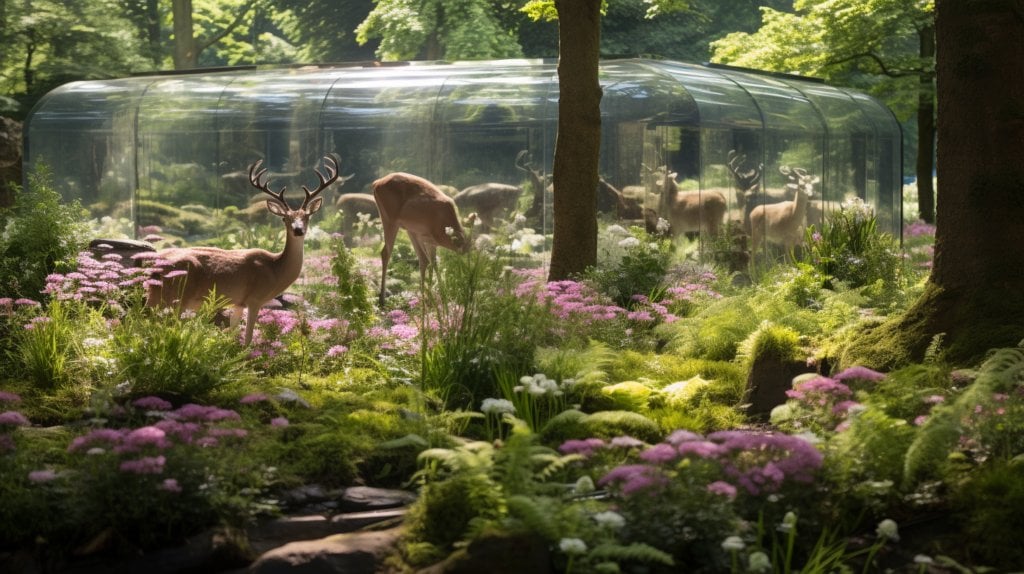
Let’s now move on to discussing the different varieties of garden phlox and their resistance, or lack thereof, to deer.
We’ll compare tall phlox and ground cover phlox, identify the deer susceptibility of woodland phlox, and finally put classic garden phlox and creeping phlox head to head.
Wondering which one deer prefer to munch on less? Stay tuned.
Comparison of tall phlox and ground cover phlox in relation to deer resistance
I’ve noticed that there’s a difference in deer resistance between tall phlox and ground cover phlox, which we’ll delve into now. It can be disheartening to see these beautiful garden phlox plants nibbled away by deer.
In my experience, here are some comparisons:
- Tall phlox often proves more tempting to deer, especially if other food sources are scarce.
- Ground cover phlox seems to have a higher deer resistance, perhaps due to its lower height and less noticeable presence.
Incorporating deer-repellent strategies can help protect tall phlox but isn’t always necessary for the hardier ground cover variety. Even so, neither type is completely deer-proof, so vigilance is key. In the battle against deer, understanding these differences can guide our garden planning.
Identifying woodland phlox and its susceptibility to deer
Now, I’m going to explore the woodland phlox, another variety of garden phlox, and assess its vulnerability to deer.
Identifying Phlox divaricata (woodland) is simple. It’s a low-growing perennial with bluish-purple flowers that bloom in spring.
But is woodland phlox deer resistant? Unfortunately, it’s not. Its susceptibility to deer is high, making it a favorite snack for these creatures. Unlike some other phlox varieties that might be more deer-repellent, Phlox divaricata is a delicacy deer can’t resist.
Classic garden phlox vs creeping phlox: Which one do deer consume less?
In this part of our discussion, I’m comparing two popular varieties of garden phlox, the classic garden phlox, and the creeping phlox, to determine which one is less likely to end up as a meal for deer.
- Classic garden phlox, with its tall, vibrant flowers, can, unfortunately, attract deer, who consume its leaves and flowers.
- Creeping phlox, on the other hand, tends to be more deer-repellent. Its dense growth and mat-like form seem to hinder deer.
- It’s crucial to remember that ‘deer resistant’ doesn’t mean ‘deer-proof.’ If food is scarce, deer may still nibble on your creeping phlox.
- However, between classic garden phlox and creeping phlox, the latter appears to be the safer bet for those aiming to maintain a beautiful, untouched garden.
How to Keep Deer Away from Your Phlox Flowers?
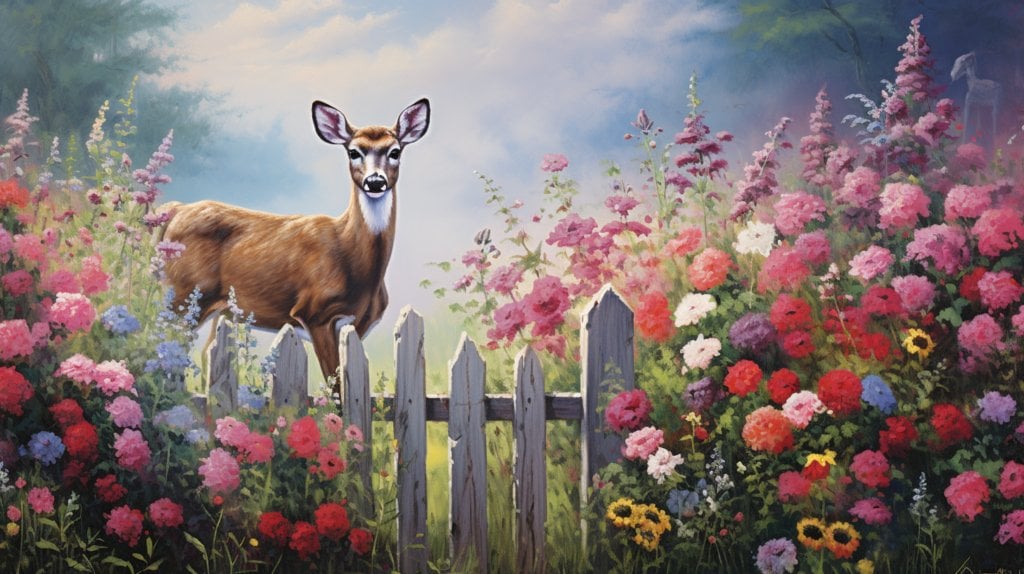
Now, let’s talk about how to protect your beautiful phlox florals from hungry deer. We’ll look at using natural repellents, designing your garden to shield your phlox, and implementing physical barriers like fences.
It’s all about finding the right combination of methods to keep these creatures at bay.
Natural repellents to shun deer from eating phlox
I’ve found several natural repellents that can effectively keep deer away from your phlox florals. These remedies are simple and can deter deer from feasting on the phlox subulata in your garden.
Here’s my list of natural repellents:
- Homemade mixtures with strong scents like garlic or chili powder can deter deer.
- Commercial sprays often have a nasty taste that deer hate.
- Physical barriers like netting can keep deer away from your phlox.
- Planting other plants that deer dislike around your phlox can act as a natural deterrent.
Using these deterrents, you can protect your phlox in your garden and enjoy their beauty without the worry of deer turning them into a snack.
Garden designs and shield plants to protect phlox flowers
Often, I strategically design my garden and select particular shield plants to protect my phlox flowers from intrusive deer. I find it crucial to incorporate deer-repellent plants into my garden designs as a first line of defense. These plants, unappealing to deer due to their texture or scent, effectively shield and protect phlox florals.
Lavender, for example, with its strong scent and spiky texture, is an excellent shield plant. I also use prickly bushes and tall grasses to create a physical barrier around my phlox foliage.
Fences and other physical barriers to keep deer from eating phlox
During the early morning hours, when deer are most active, I’ve found that physical barriers like fences can be incredibly effective in keeping these persistent creatures away from my beloved phlox florals. There’s something truly heart-wrenching about finding your garden ravaged by deer.
To make your garden deer-proof and protect your phlox from deer, here are some strategies I’ve successfully implemented:
- Installing high fences, at least 8 feet tall, as deer can jump surprisingly high. Make use of leftover concrete if you have some to make a foundation for the fence.
- Using netting or mesh to cover the phlox florals.
- Adding a row of thorny bushes or other deterrents around the garden.
- Including a scarecrow or other animal decoys to frighten the deer away.
These measures can prevent deer from accessing your phlox and keep deer from eating your carefully cultivated garden.
Alternatives to Plant If Deer Eat Phlox
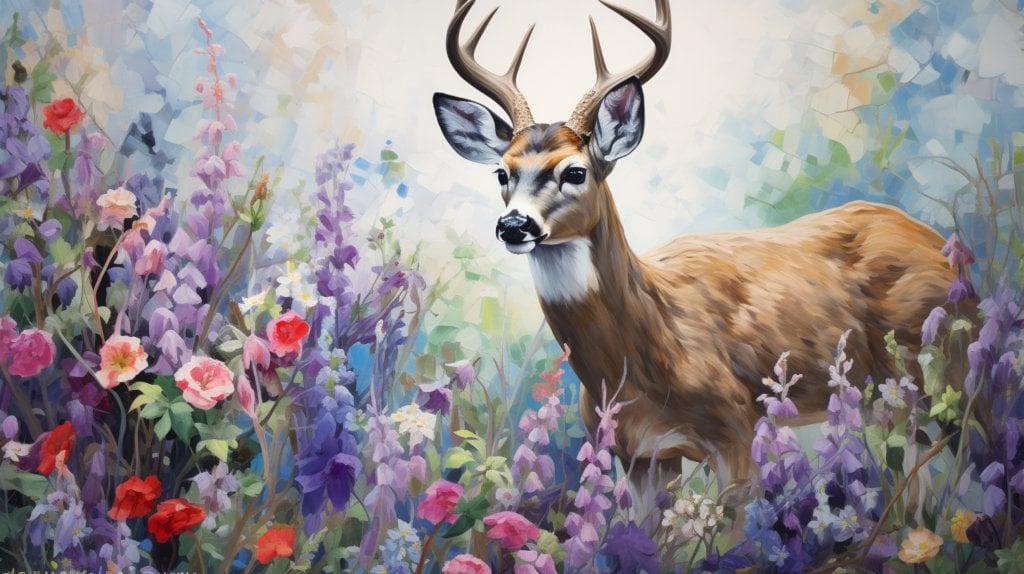
If deer are feasting on your phlox, don’t despair. Let’s explore some alternatives you can plant in your garden that are less likely to attract these hungry visitors.
We’ll consider the top deer-repellent flowers, understand why some blooms deter deer, and weigh the pros and cons of popular deer-repellent gardens.
Top deer-resistant flowers to consider for your garden
I’ve compiled a list of the top deer-repellent flowers you might want to consider for your garden, especially if deer are feasting on your phlox. These alternatives not only bring life to your garden but also ensure its beauty is maintained unhindered by our furry friends.
- Marigolds: Their pungent smell is a natural deer deterrent, but their vibrant colors will surely brighten your garden.
- Lavender: Not only deer-repellent but also a magnet for beneficial insects like bees and butterflies.
- Daffodils: Deer tend to repel these cheerful blooms due to their poisonous characteristics.
- Bleeding Heart: A truly unique flower, its unusual shape and vivid color can add intrigue to your garden.
Consider these top options to maintain a healthy, vibrant, and, most importantly, deer-repellent garden.
Why some blooms are less attractive to deer
It’s fascinating to understand why some blooms are less attractive to deer and to explore alternatives you can plant if deer are munching on your phlox.
Blooms less attractive to deer often have specific characteristics. They may have a strong scent or taste, which acts as a natural deer repellent. For instance, plants like lavender and rosemary are avoided by deer due to their potent smell.
If you’re looking for a phlox foliage deer resistant, consider those with hairy leaves or stems, as deer don’t like the texture. Other deer-repellent alternatives include plants like daffodils and foxgloves, which contain toxins that deer avoid.
Pros and cons of popular deer-resistant gardens
Despite the frustration of dealing with deer in my garden, I’ve found silver linings in discovering the pros and cons of alternative deer-repellent gardens, above and beyond the usual phlox foliage.
Here’s what I’ve uncovered:
- Deer-resistant gardens can reduce deer damage, but they often require a significant amount of upfront work and ongoing maintenance.
- While certain plants, like the popular phlox, are known to be deer-resistant, they’re not always 100% effective.
- The beauty of a deer-repellent garden can be just as captivating as a regular garden, if not more so, due to the variety of unique and resilient plants.
- However, it’s important to remember that what’s resistant to deer mightn’t be resistant to other pests.
As I master the art of deer-repellent gardening, I’ve found these pros and cons to be invaluable guides.
Monitor and Maintain Your Deer-Resistant Garden

Now, let’s talk about how you can keep a close eye on your garden and maintain its deer resistance.
We’ll go over some handy tips for taking care of your phlox and other blooms.
And if things get tricky, don’t worry. We’ll discuss when it’s time to call in the professionals or reach out to us for help.
Regular checks to evaluate deer resistance in your garden
I’m regularly conducting checks in my garden to evaluate the effectiveness of deer-resistant plants, such as phlox foliage. It’s important to monitor your garden’s progress and maintain your efforts in cultivating deer-resistant plants.
Here are some emotions I experience during my regular checks:
- Relief when I see my phlox foliage flourishing, untouched by deer.
- Satisfaction, knowing my efforts in creating a deer-resistant garden are paying off.
- Disappointment when I find unanticipated deer traces.
- Determination to continually adjust and improve my garden’s deer resistance.
Conducting regular checks to evaluate deer resistance in your garden is crucial. It’s not just about protecting your plants but also about growing as a gardener, learning more about your garden, and mastering the art of deer resistance.
Maintenance tips for your phlox plants and other blooms
While it’s rewarding to see your garden thrive despite the deer, it’s essential to keep up with maintenance tasks for your phlox foliages and other blooms to ensure their healthy growth.
To maintain your phlox foliage’s deer resistance, regular watering is crucial, but avoid soaking the leaves as this can lead to mildew. Properly spaced phlox flowers allow air circulation, reducing disease risk. For a lush ground cover, remove faded blooms, promoting repeated blooming.
Fertilize your phlox in early spring for vigorous, beautiful blooms. Remember, a well-maintained, vibrant garden not only wards off deer but also attracts pollinators.
Following these maintenance tips for your phlox foliages and other blooms will keep your garden thriving and deer-resistant.
When to contact garden professionals or us for further help.
If you’ve followed all these steps and still find that your deer-resistant garden needs more care than you can provide, it’s time to consider reaching out to a professional or contacting us for further assistance.
- You’re struggling to keep your phlox plant and other deer-resistant plants healthy despite following all the given advice.
- Deer are still managing to breach your defenses and are feasting on your prized blooms.
- You’re feeling overwhelmed by the sheer effort and time that maintaining a deer-resistant garden requires.
- You’re at a loss on how to further improve your garden’s resistance against deer.
Don’t let these challenges discourage you. Garden professionals have the expertise to provide further help. Feel free to contact us anytime. We’re here to ensure that your garden thrives, remains beautiful, and, most importantly, stays deer-resistant.
Conclusion
So, it turns out that phlox foliages aren’t exactly deer-resistant. Although deer may not be their biggest fans, they’ll still nibble on them if there’s nothing else around.
By planting alternative plants, using deterrents, and regularly monitoring your garden, you can protect your phlox.
At the end of the day, it’s about finding the right balance in your garden that caters to your aesthetic and keeps the local wildlife happy, too.
Frequently Asked Questions
What Other Types of Plants Are Deer Resistant Besides Phlox?
In addition to the phlox foliages, there are several deer-resistant plants. I’ve found that lavender, sage, thyme, and yarrow are less likely to be nibbled on, making them great choices for a deer-prone garden.
How Long Does It Take for Phlox to Grow Fully?
In my experience, it takes about two to three years for phlox foliage to reach full maturity. They’re perennials, so they’ll come back each year, getting more robust and bushier with each growing season.
Are There Any Specific Climates or Environments Where Phlox Thrive Better?
I’ve found that phlox foliages thrive best in climates with cool summers. They also prefer well-drained soil and full sun exposure. However, they can tolerate partial shade in hotter climates.
Can Phlox Be Harmful to Other Animals Besides Deer?
In my experience, phlox isn’t harmful to other animals. It’s typically well-tolerated by most wildlife. However, it’s always wise to monitor any unusual reactions in your backyard critters just to be safe.
Does the Deer-Resistance of Phlox Decrease With Age or Season?
Regarding your question, it’s not the age or season that affects the deer’s resistance to phlox. Rather, it’s the plant’s health and vigor that can influence its ability to ward off deer.



